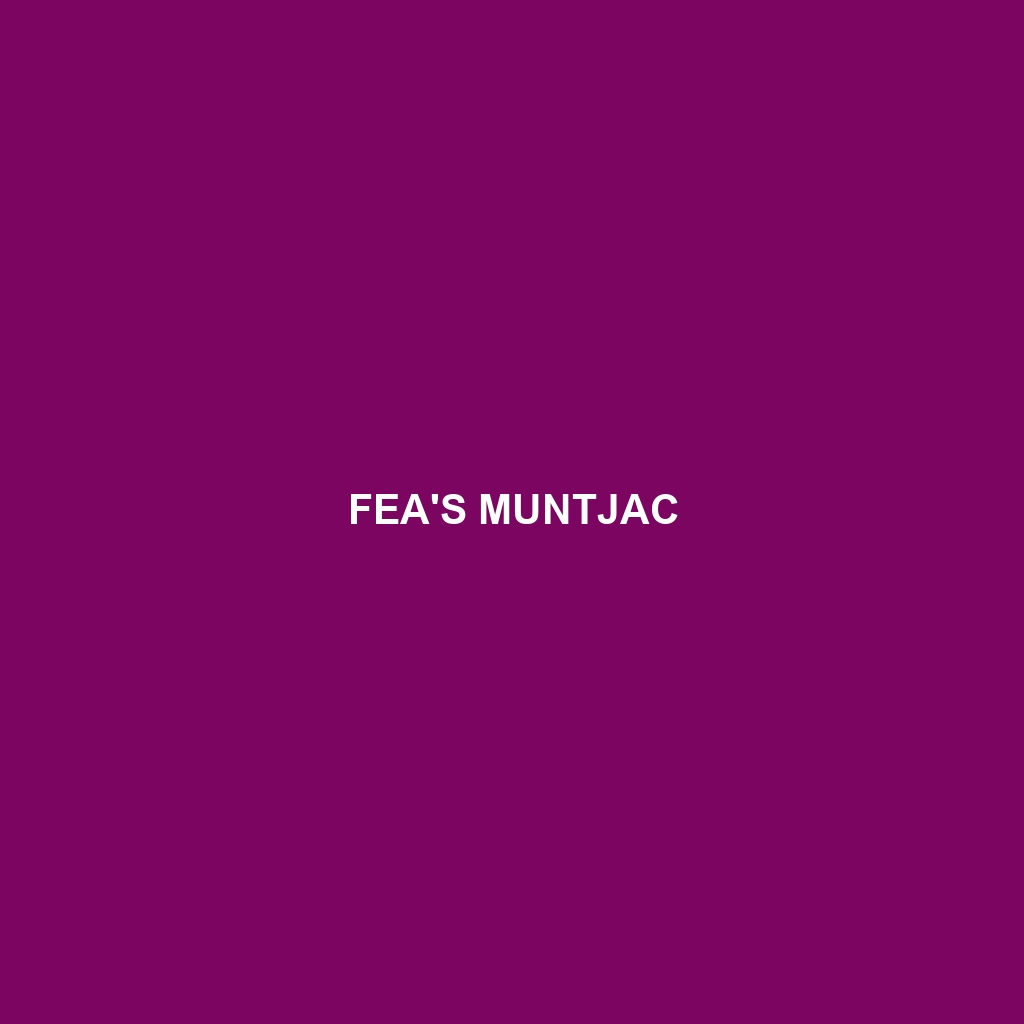Black Muntjac (Scientific Name: Muntiacus crinifrons)
Habitat: The Black Muntjac is primarily found in dense tropical forests, moist deciduous forests, and hilly terrains across Southeast Asia, particularly in countries such as Thailand, Myanmar, and Vietnam. This species thrives in regions with abundant vegetation, offering shelter and food resources.
Physical Characteristics: The Black Muntjac is a small deer, typically weighing between 18 to 31 kg (40 to 68 lbs) and standing about 70 cm (28 inches) tall at the shoulder. It features a unique dark brown to black coat, which aids in camouflage within its forest habitat. Notably, male Black Muntjacs exhibit long, sharp antlers that emerge when they reach maturity, along with distinctive canines protruding from their lower jaw, giving them a prehistoric appearance.
Behavior: Black Muntjacs are primarily solitary or found in small groups. They are crepuscular, being most active during dawn and dusk, which helps them avoid predators. Their unique vocalizations, often described as barking, are used to communicate with others and establish territory. Black Muntjacs are known for their agility and ability to navigate through dense underbrush with relative ease.
Diet: The diet of the Black Muntjac consists mainly of leaves, fruits, and shrubs, making them herbivores. They are particularly fond of browsing on young shoots and forbs, which are abundant in their forest environment. Their feeding habits contribute to forest ecology by aiding in seed dispersal and maintaining the growth of vegetation.
Reproduction: Black Muntjacs breed throughout the year, with peaks during the rainy season. The gestation period lasts about 7 months, typically resulting in a single fawn. The fawn is born with a spotted coat that helps it blend into the forest floor, providing protection from predators. Maternal care is crucial, with mothers often hiding their young to avoid detection.
Conservation Status: The Black Muntjac is listed as Vulnerable by the International Union for Conservation of Nature (IUCN), facing threats from habitat loss due to deforestation and hunting. Conservation efforts are important to ensure their survival in the wild.
Interesting Facts: One fascinating aspect of the Black Muntjac is its ability to regrow teeth, particularly the sharp canines, which can be beneficial for maintaining its feeding habits. Additionally, it is known to be one of the few deer species that produce vocalizations resembling barking.
Role in Ecosystem: Black Muntjacs play a crucial role in their ecosystem as herbivores, influencing the composition and structure of plant communities. By browsing on vegetation, they facilitate the growth of specific plant species and contribute to the overall health of their forest habitats. Their presence also supports predator species that depend on them as a food source.
